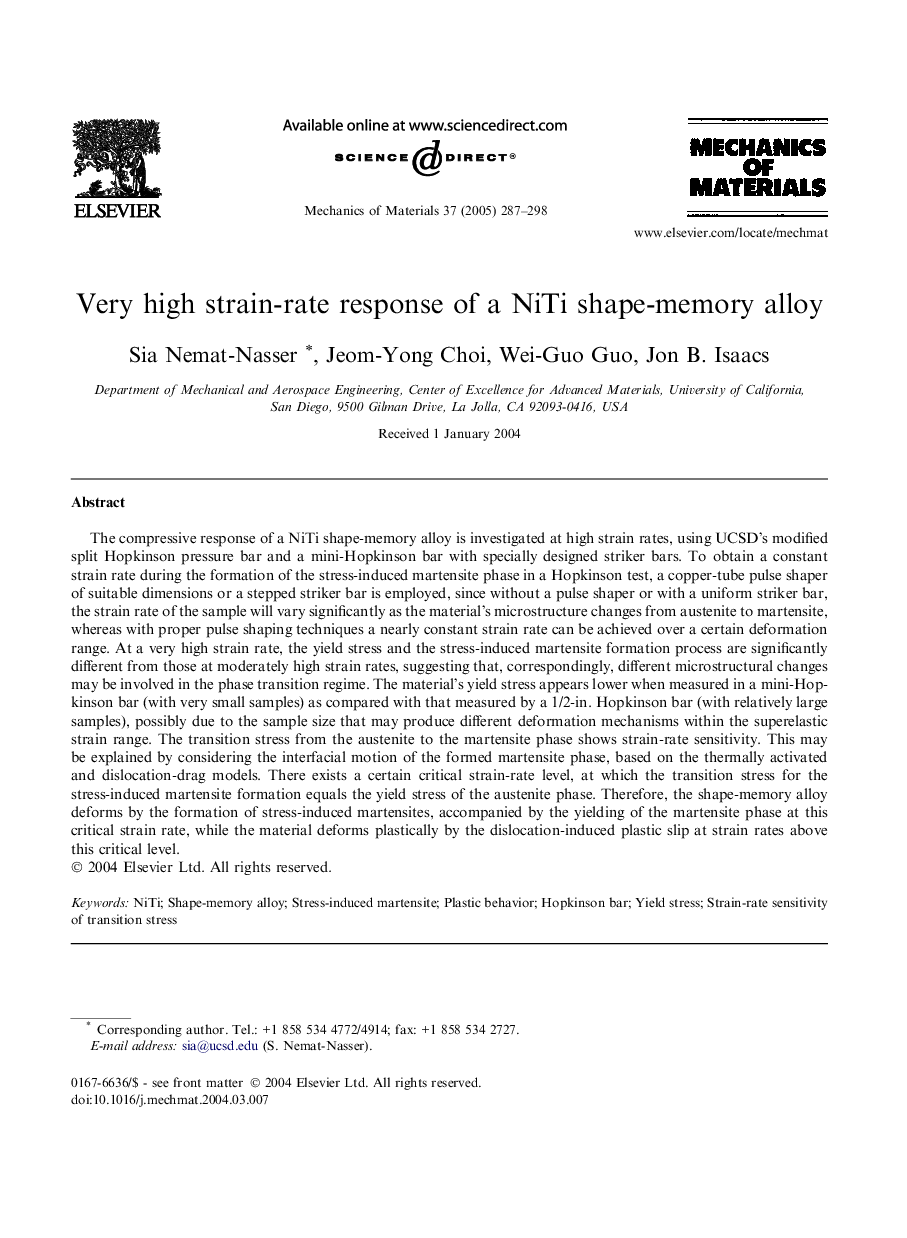| کد مقاله | کد نشریه | سال انتشار | مقاله انگلیسی | نسخه تمام متن |
|---|---|---|---|---|
| 9711666 | 1467573 | 2005 | 12 صفحه PDF | دانلود رایگان |
عنوان انگلیسی مقاله ISI
Very high strain-rate response of a NiTi shape-memory alloy
دانلود مقاله + سفارش ترجمه
دانلود مقاله ISI انگلیسی
رایگان برای ایرانیان
کلمات کلیدی
موضوعات مرتبط
مهندسی و علوم پایه
سایر رشته های مهندسی
مهندسی مکانیک
پیش نمایش صفحه اول مقاله

چکیده انگلیسی
The compressive response of a NiTi shape-memory alloy is investigated at high strain rates, using UCSD's modified split Hopkinson pressure bar and a mini-Hopkinson bar with specially designed striker bars. To obtain a constant strain rate during the formation of the stress-induced martensite phase in a Hopkinson test, a copper-tube pulse shaper of suitable dimensions or a stepped striker bar is employed, since without a pulse shaper or with a uniform striker bar, the strain rate of the sample will vary significantly as the material's microstructure changes from austenite to martensite, whereas with proper pulse shaping techniques a nearly constant strain rate can be achieved over a certain deformation range. At a very high strain rate, the yield stress and the stress-induced martensite formation process are significantly different from those at moderately high strain rates, suggesting that, correspondingly, different microstructural changes may be involved in the phase transition regime. The material's yield stress appears lower when measured in a mini-Hopkinson bar (with very small samples) as compared with that measured by a 1/2-in. Hopkinson bar (with relatively large samples), possibly due to the sample size that may produce different deformation mechanisms within the superelastic strain range. The transition stress from the austenite to the martensite phase shows strain-rate sensitivity. This may be explained by considering the interfacial motion of the formed martensite phase, based on the thermally activated and dislocation-drag models. There exists a certain critical strain-rate level, at which the transition stress for the stress-induced martensite formation equals the yield stress of the austenite phase. Therefore, the shape-memory alloy deforms by the formation of stress-induced martensites, accompanied by the yielding of the martensite phase at this critical strain rate, while the material deforms plastically by the dislocation-induced plastic slip at strain rates above this critical level.
ناشر
Database: Elsevier - ScienceDirect (ساینس دایرکت)
Journal: Mechanics of Materials - Volume 37, Issues 2â3, FebruaryâMarch 2005, Pages 287-298
Journal: Mechanics of Materials - Volume 37, Issues 2â3, FebruaryâMarch 2005, Pages 287-298
نویسندگان
Sia Nemat-Nasser, Jeom-Yong Choi, Wei-Guo Guo, Jon B. Isaacs,